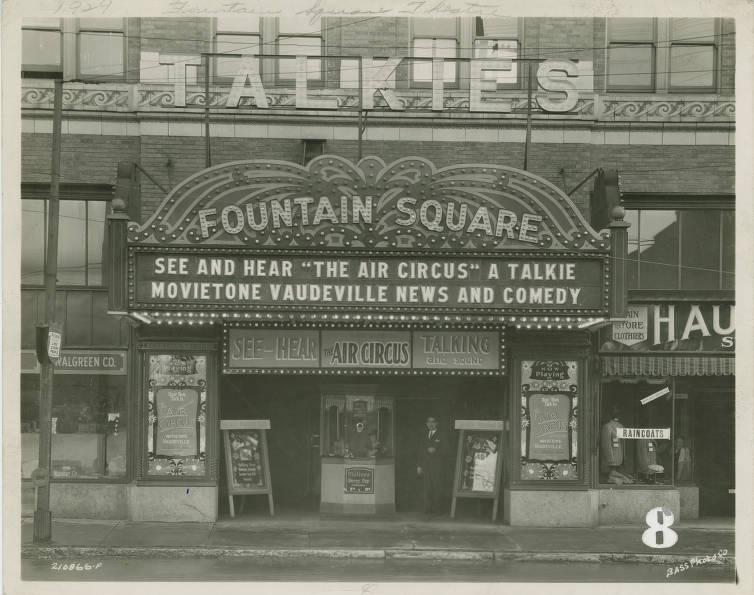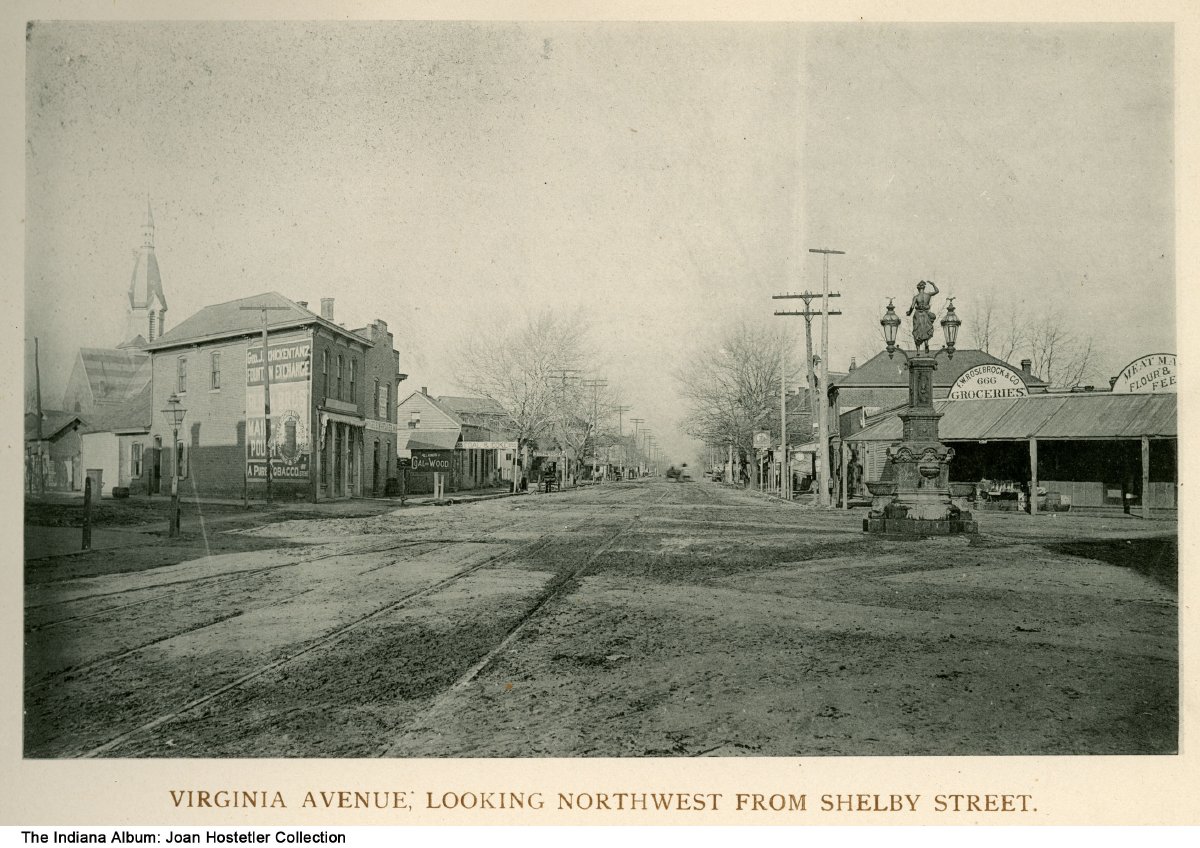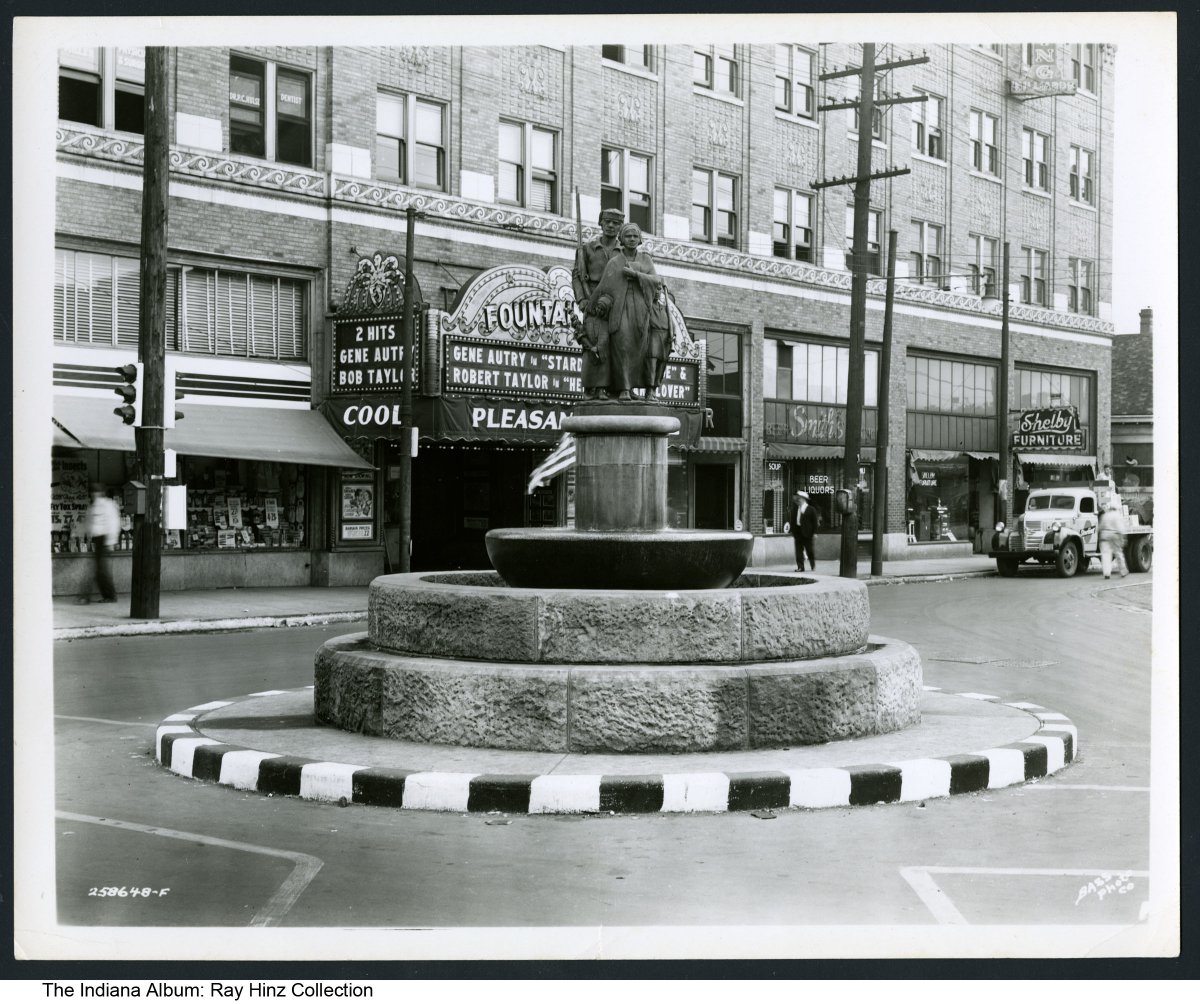Located at and near the intersection of three busy thoroughfares—Virginia Avenue and Prospect and Shelby streets—Fountain Square has been a commercial center for over 100 years. The Citizens Street Railway Company laid tracks down Virginia Avenue and located a turnaround at the intersection in 1864. Settlement, sparse at first, increased significantly in the 1870s as families built homes in nearby . Additional traffic from the Virginia Avenue viaduct gave the area a second boost after 1892.

German entrepreneurs were the first to arrive, opening groceries, bakeries, jewelry stores, and saloons in the square. Irish, Italian, and Danish immigrants followed, but Fountain Square retained a distinctive German character well into the 20th century.
The original fountain in the square was erected in 1889 by area merchants. According to lore, the fountain toppled some 30 years later when an advertising banner was anchored to it. The second fountain was constructed as a memorial to Ralph Hill, an Indiana congressman. Local artist sculpted the fountain piece, . Dedicated in 1924, the fountain was removed in 1954 as part of a plan to alleviate traffic congestion in the square. A community organization petitioned for the fountain’s return from in 1969.

Fountain Square prospered into the 1920s, especially when it became the city’s first cinema theater district. As many as seven theaters operated at one time, including the Sanders (Apex) Theater (1914-1952) and the Fountain Square Theatre (1928-1960).
Fountain Square fell on hard times after World War II when newer shopping centers emerged and suburbs drew away residents. Interstate 65/70 construction razed many homes in the 1960s, but when the district was listed on the National Register of Historic Places in 1983, corporate support, city grants, and private donations initiated a revitalization program that was followed a year later with placement on the list of adopted districts on which to focus rehabilitation efforts. A more focused rehabilitation effort began in the 1990s as restaurants, art galleries, retail and office space, and live entertainment came to the neighborhood. In 1999 Fountain Square’s renaissance culminated with its recognition as one of six Indianapolis .

Fountain Square is recognized for its walkability, unique architecture, proximity to downtown Indianapolis, and easy access to major highways. It also is known increasingly for its restaurants and nightlife. Fountain Square played an important role in the historical development of the city’s transportation system, especially as the last stop on the Virginia Avenue streetcar line. That connectivity continues via the rapid transit Red Line and the .

Is this your community?
Do you have photos or stories?
Contribute to this page by emailing us your suggestions.